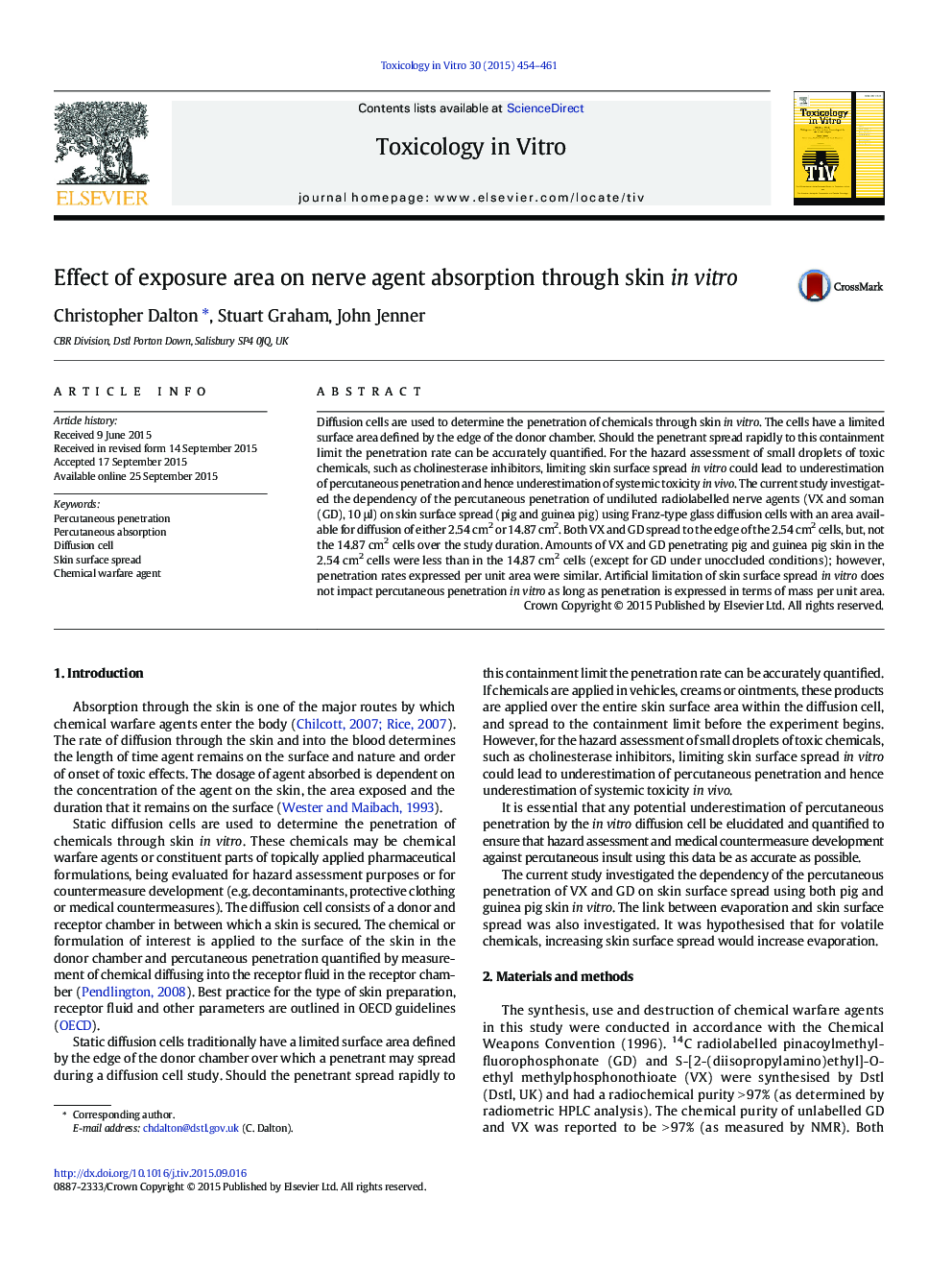| Article ID | Journal | Published Year | Pages | File Type |
|---|---|---|---|---|
| 2602448 | Toxicology in Vitro | 2015 | 8 Pages |
•We investigate the dependency of skin surface spread on percutaneous penetration of nerve agents.•Artificial limitation of skin surface spread reduced nerve agent penetration.•Percutaneous penetration must be expressed in terms of mass per unit area•Penetration should not be expressed in terms of mass per unit area penetrated unless the spread is known.
Diffusion cells are used to determine the penetration of chemicals through skin in vitro. The cells have a limited surface area defined by the edge of the donor chamber. Should the penetrant spread rapidly to this containment limit the penetration rate can be accurately quantified. For the hazard assessment of small droplets of toxic chemicals, such as cholinesterase inhibitors, limiting skin surface spread in vitro could lead to underestimation of percutaneous penetration and hence underestimation of systemic toxicity in vivo. The current study investigated the dependency of the percutaneous penetration of undiluted radiolabelled nerve agents (VX and soman (GD), 10 μl) on skin surface spread (pig and guinea pig) using Franz-type glass diffusion cells with an area available for diffusion of either 2.54 cm2 or 14.87 cm2. Both VX and GD spread to the edge of the 2.54 cm2 cells, but, not the 14.87 cm2 cells over the study duration. Amounts of VX and GD penetrating pig and guinea pig skin in the 2.54 cm2 cells were less than in the 14.87 cm2 cells (except for GD under unoccluded conditions); however, penetration rates expressed per unit area were similar. Artificial limitation of skin surface spread in vitro does not impact percutaneous penetration in vitro as long as penetration is expressed in terms of mass per unit area.
